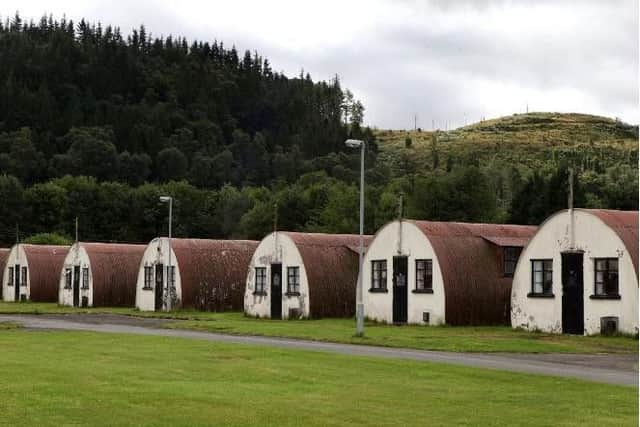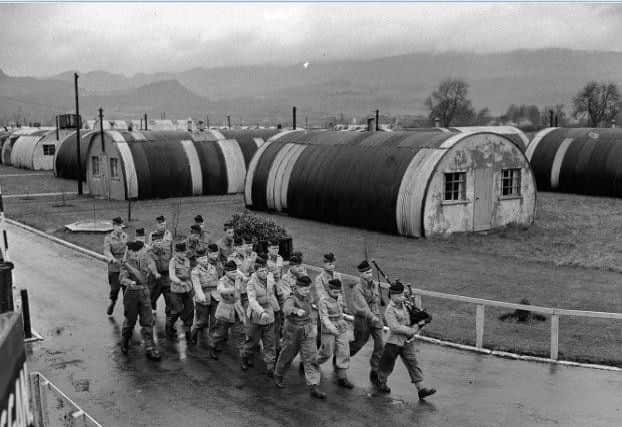Scottish high-security WW2 camp which housed thousands of Nazi prisoners to be reopened as holiday park
Now the Second World War high-security camp at Cultybraggan is set for a new lease of life when it reopens as a holiday park.
Five of the 11 B-listed Nissen huts at Camp 21, Perthshire, are to become high-quality, sustainable, self-catering accommodation.
Advertisement
Hide AdAdvertisement
Hide AdOne will be turned into a furniture store and laundry to support the self-catering offering, and the other five into commercial let accommodation, including a possible pop-up cafe.


The development of former Perthshire prisoner of war huts will benefit from a major £108,810 conservation windfall from the Comrie Development Trust.
It is the latest boost to the trust’s efforts to develop the site.
The Cultybraggan cash comes from Historic Environment Scotland’s (HES) announcement of £842,802, which will be shared by four heritage projects nationwide.
Built in 1939, the remote maximum security site contained up to 4,000 German prisoners at a time, many of them the toughest Afrika Korps and SS troops.


The camp is the only Second World War prisoner of war camp in Scotland which is open to the public.
The ringleaders of an infamous 1944 “Devizes Plot” to free 250,000 PoWs from camps throughout the country and then mount an attack on the UK from within were consigned to Camp 21, as Cultybraggan was known during the war years.
The site became an MoD training camp from 1948 to 2004.
It was bought by Comrie Development Trust (CDT) in 2007 amid fears it would be demolished.
Advertisement
Hide AdAdvertisement
Hide AdNow, it hosts a visitor centre, heritage trail and community orchard with some huts hired to an eclectic mix of local businesses such as a pottery and bakery.
Since August 2018, for a small fee, visitors have been able to enjoy a new storyboard heritage trail and installations including the refurbished jail block and a recreation of prisoner accommodation in one of the 100ft-long huts
The camp is already well used by a variety of groups including Cubs, Guides and Comrie in Colour.
Hospitalfield House in Arbroath is another Tayside winner in the awards round.
A £92,387 repair grant award will help with the restoration of Hospitalfield’s 19th Century fernery, designed in 1872 by Patrick Allan-Fraser to house two New Zealand tree ferns, which is the only building of its type remaining on the east coast of Scotland.
On his death in 1890, Hospitalfield was part of the estate which artist and architect Allan Fraser left in trust to support artists of the future.
The walled garden at Hospitalfield is to feature a new design exploring 800 years of the garden’s history, with year round public opening and a new cafe included in the plans to expand the role of the house as a cultural hub.
Hospitalfield director Lucy Byatt said: “This is the first major investment into the buildings for 100 years.
Advertisement
Hide AdAdvertisement
Hide Ad“It is absolutely wonderful to see our contractor CHAP Construction on site and making such excellent progress.”
Also, Inverness Creative Academy will receive £500,000 and Dunollie Castle in Oban gets £141,605 from HES.